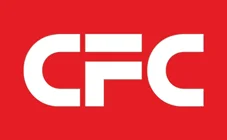http://www.sciencetech.technomuses.ca/english/whatson/2011-cool-science-saturday.cfm
Premiere of Cool Science Saturday
Saturday, February 19, from 2 p.m. to 9 p.m.
Free admission. Free parking at the Museum and Laboratories. Free shuttle bus between the Canada Science and Technology Museum, Parks Canada Conservation Laboratories and Dows Lake.
3 locations:
At the Canada Science and Technology Museum:
Participate in an exciting array of cool science activities for the whole family.
<UL type=square>Explore the winter sky in the Helen Sawyer Hogg Observatory using Canada’s largest refracting telescope.
Visit the Museum’s newest exhibition, Echoes in the Ice: History, Mystery, and Frozen Corpses, which decodes the mysteries of the lost Franklin Expedition of 1845. Franklin Expedition ships, continuing the historic quest presented in the Science and Technology Museum’s exhibit Echoes in the Ice.
See the tools of the trade (diving gear, underwater cameras, sonar, and submersible robots) that in 2010 helped Parks Canada discover the HMS Investigator, lost in 1853, while looking for the Franklin Expedition ships.
Conservators will be on-hand to explain what they do in their laboratories to conserve fascinating fragile artifacts, including a ship’s wheel recovered from Arctic depths.
Meet the biologists who read the signs of a changing northern landscape. Activities will have you trying your luck at distinguishing moose from caribou in night-vision images and learning about Inuit elders’ vocabulary for sea ice and the signs of danger when travelling on it.
See the equipment used for a different kind of ice fishing - coring for algae and pollen at the bottom of northern lakes. These cores have a fascinating story to tell about climate and lake chemistry.
You will also find out how satellites are catching up with traditional knowledge in mapping the spread of shrubs across the tundra and in keeping track of the shorter season for freeze-up on remote northern lakes.
Organized by Natural Resources Canada, Parks Canada, National Research Council Canada and the Canada Science and Technology Museum in collaboration with the National Capital Commission.
http://www.canadascapital.gc.ca/winterlude/
Premiere of Cool Science Saturday
Saturday, February 19, from 2 p.m. to 9 p.m.
Free admission. Free parking at the Museum and Laboratories. Free shuttle bus between the Canada Science and Technology Museum, Parks Canada Conservation Laboratories and Dows Lake.
3 locations:
- Canada Science and Technology Museum, 1867 St. Laurent Boulevard, Ottawa (including displays from the National Research Council, Natural Resources Canada, and the Canadian Space Agency), including the Natural Resources Canada's Arctic Ice Camp.
- Parks Canada Conservation Laboratories, 1800 Walkley Road (corner of Heron Road), Ottawa;
- Natural Resources Canada's Arctic Ice Camp on Dows Lake.
At the Canada Science and Technology Museum:
Participate in an exciting array of cool science activities for the whole family.
<UL type=square>Explore the winter sky in the Helen Sawyer Hogg Observatory using Canada’s largest refracting telescope.
Visit the Museum’s newest exhibition, Echoes in the Ice: History, Mystery, and Frozen Corpses, which decodes the mysteries of the lost Franklin Expedition of 1845. Franklin Expedition ships, continuing the historic quest presented in the Science and Technology Museum’s exhibit Echoes in the Ice.
See the tools of the trade (diving gear, underwater cameras, sonar, and submersible robots) that in 2010 helped Parks Canada discover the HMS Investigator, lost in 1853, while looking for the Franklin Expedition ships.
Conservators will be on-hand to explain what they do in their laboratories to conserve fascinating fragile artifacts, including a ship’s wheel recovered from Arctic depths.
Meet the biologists who read the signs of a changing northern landscape. Activities will have you trying your luck at distinguishing moose from caribou in night-vision images and learning about Inuit elders’ vocabulary for sea ice and the signs of danger when travelling on it.
See the equipment used for a different kind of ice fishing - coring for algae and pollen at the bottom of northern lakes. These cores have a fascinating story to tell about climate and lake chemistry.
You will also find out how satellites are catching up with traditional knowledge in mapping the spread of shrubs across the tundra and in keeping track of the shorter season for freeze-up on remote northern lakes.
Organized by Natural Resources Canada, Parks Canada, National Research Council Canada and the Canada Science and Technology Museum in collaboration with the National Capital Commission.
http://www.canadascapital.gc.ca/winterlude/
